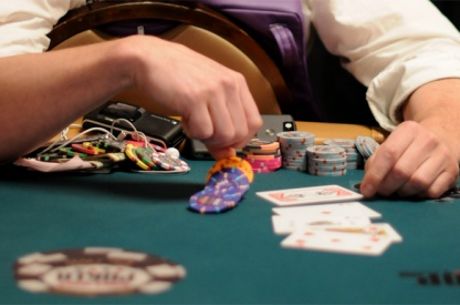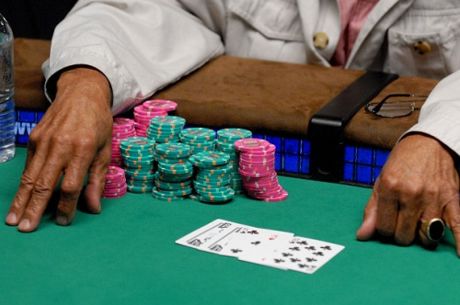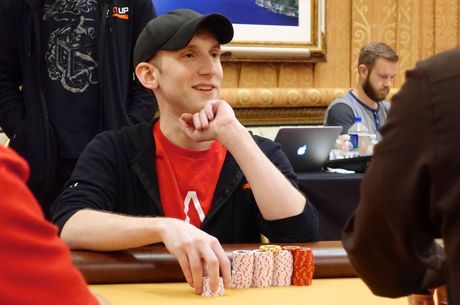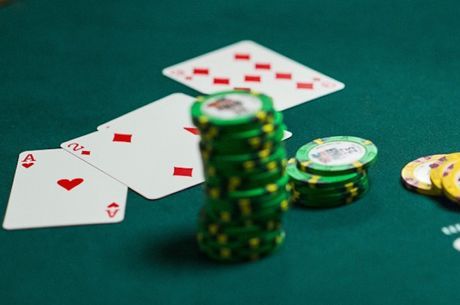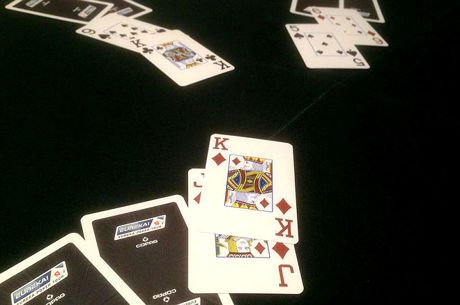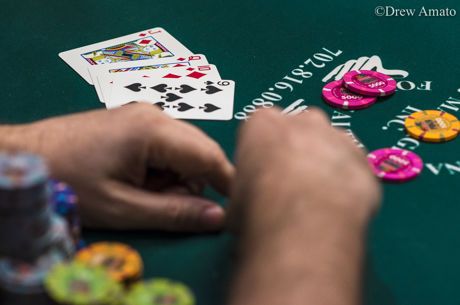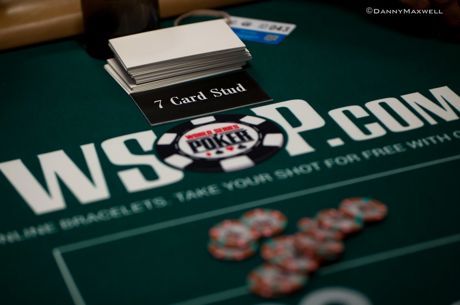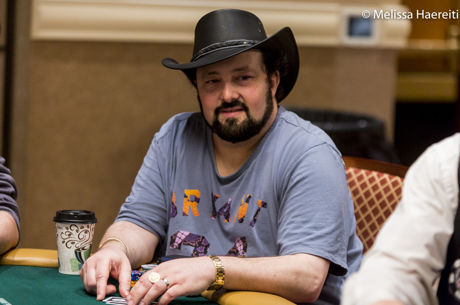Stud Strategy: Third Street Aggression With the Second-Best Hand
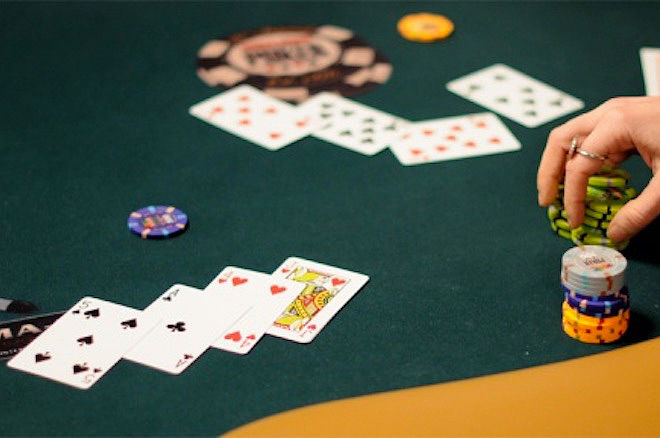
In my last column I wrote about the need for aggression in stud tournaments at the World Series of Poker — a need that stems largely from the high ratio of the initial pot size to the size of the lower tier bet.
In low- and medium-stakes stud games, that initial complete bet is relatively large when compared to the pot. But in a WSOP tournament it is relatively small, which means the reward is much greater for a steal there than in most cash games.
A reader, David Kopp, pointed out to me that the structure for WSOP tournaments is much like those of large-staked games. This is true. Aggressive play is a useful device not just in tournaments, but also in games of $75/$150 and higher.
Having established the efficacy of such aggression in my last column, today I’d like to take it a step further and look at some specific ways you can apply that aggression. Some of these examples might not occur to some stud players who tend to compete in the calmer waters of $1/$3 or $1/$5 spread-limit games, fixed-limit games of $5/$10, $10/$20 or $20/$40, or in home games.
Aggression When Second-Best
It is crucially important that you not limit your aggression only to those times when you think you’re in the lead. Sometimes you want to fight for a pot when you are certain that you are behind in second place. While this might at first seem counterintuitive, this strategy can in fact be effective in the bigger games or tournaments.
For an analogy, imagine you’re playing in a poker room that’s running a “Splash the Pot” promotion. Every hour players at a lucky table will get an infusion of money from the house. In this fictional $5/$10 limit stud game, the house places five black $100 chips into your pot, and whoever wins the pot also wins that extra $500.
Sure enough, the pot you are about to play has just been so designated. The floor comes over and drops in those five $100 chips, and you’re dealt (4♦4♥) / A♦. Everyone has anted 50 cents, and the player with the 3♣ showing brings it in for $2. There’s $506 in the pot. Two players fold, then the player on your immediate right completes the bet to $5. What do you do?
It’s obvious, isn’t it? You have to raise, hoping to drive the other players out of the pot so you and that other player with the K♣ up can compete for the $500 splash. Without checking the math, you know that with that extra money in the pot it’s surely a good raise, even if you knew with certainty the player with the king showing had another in the hole for a split pair of kings.
As it turns out, you’re only a 42 to 58 percent underdog against such a player, assuming he has kings and that all cards are alive for both of you. But even if you were a 9-to-1 underdog and were to win the pot only one time in ten, that extra $5 — if it could get you heads-up — is money well invested to win a pot that has an extra $500 in it, yes?
You can think of a high-stakes cash game or a WSOP tournament in a similar way. The initial pot has extra money infused into it because of the large ante and bring-in. It’s not on the order of a $500 splash in a $5/$10 game, but it is enough extra money to make getting to heads-up make sense for a slight underdog. You need to limit the field and fight for that pot even though at the time you’re fighting for it you are a slight underdog.
Other Factors to Consider
There are other factors to consider in such a fight — chiefly position and dead cards, but also whether there is a third player left in the hand. Let’s look at each of these factors in turn.
Position
Keep in mind that the purpose of your raise is to try and limit the field to just you and the initial raiser. It’s easier to knock someone out of a pot with a double bet than with a single bet. Your position matters in that regard.
For example, if the bring-in were to your left, the K♣ had completed the bet, and a few players had called before the action got to you, it might not make sense to raise since your raise would just add one bet on top of a bet they had already called. Opponents who had called one full bet would likely to continue and call your extra raise. You’d be better off just calling along as well and hoping to snag one of the five cards that greatly improve your (4♦4♥) / A♦ hand (the two fours or three aces).
Alternately, as in the earlier example of the hand, if your position is to the immediate left of the raiser, you can quickly raise and make it two bets to call for the players who have not yet acted. Seeing two bets, even relatively sticky players may toss in their hands rather than play on.
Dead Cards
The other major consideration with this move is what cards are dead (i.e., the other up cards that are showing). Your chances of catching up can be greatly affected by the number of outs you and your chief opponent have.
In the above example, if two of those five outs of yours are gone — say one player is showing the 4♣ and another the A♦ — and none of your opponent’s cards is dead, then you go from being roughly a 42 percent underdog to being a 33 percent underdog. In the former instance, it makes sense to limit the field; in the latter, it doesn’t.
On the other hand, if you notice that one or more of your opponent’s kings are dead, then you’re actually a tiny favorite and should surely raise because you’re actually in the lead!
A Third Player in the Hand
Another consideration on third street is whether a third player is already in the hand. Let’s say in the above example your opponent with the K♣ showing completes the bet, and an opponent showing the J♥ exposed calls the completion to $5. It’s now up to you with your pair of fours in the hole and the exposed ace.
In the high ante tournament or cash game you should almost always raise here, even though you may be third-best. What you want to do is clear the rest of the field and provoke the initial bettor — the K♣ — to reraise you, making a hard-to-call double bet for the J♥.
If the J♥ then calls, you can cap it with another raise (representing aces), knowing that on fourth street you be leading with a bet, and hope that a raise from the K♣ will drive out the J♥. (Of course, if you don’t have the lead because another player pairs his board, you can fold on fourth.)
Once again, you must be willing to drive up the cost of competing even though you’re second-best, as the pot, infused as it is with larger antes and bring-ins, will reward you sufficiently even if you win less than half the time.
In my next column, we’ll look at the question of ante-stealing on third street.
Ashley Adams has been playing poker for 50 years and writing about it since 2000. He is the author of hundreds of articles and two books, Winning 7-Card Stud (Kensington 2003) and Winning No-Limit Hold'em (Lighthouse 2012). He is also the host of poker radio show House of Cards. See www.houseofcardsradio.com for broadcast times, stations, and podcasts.

